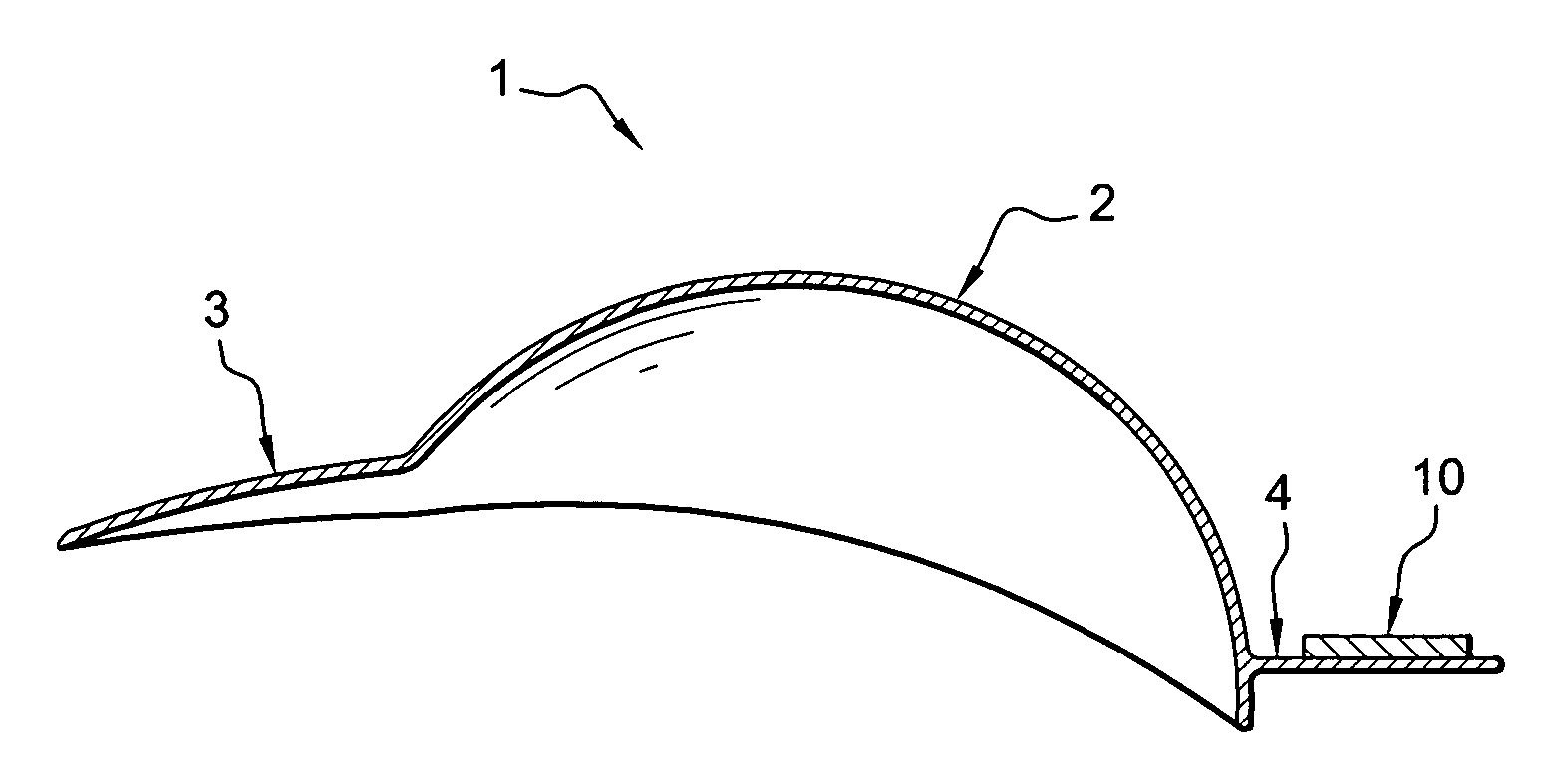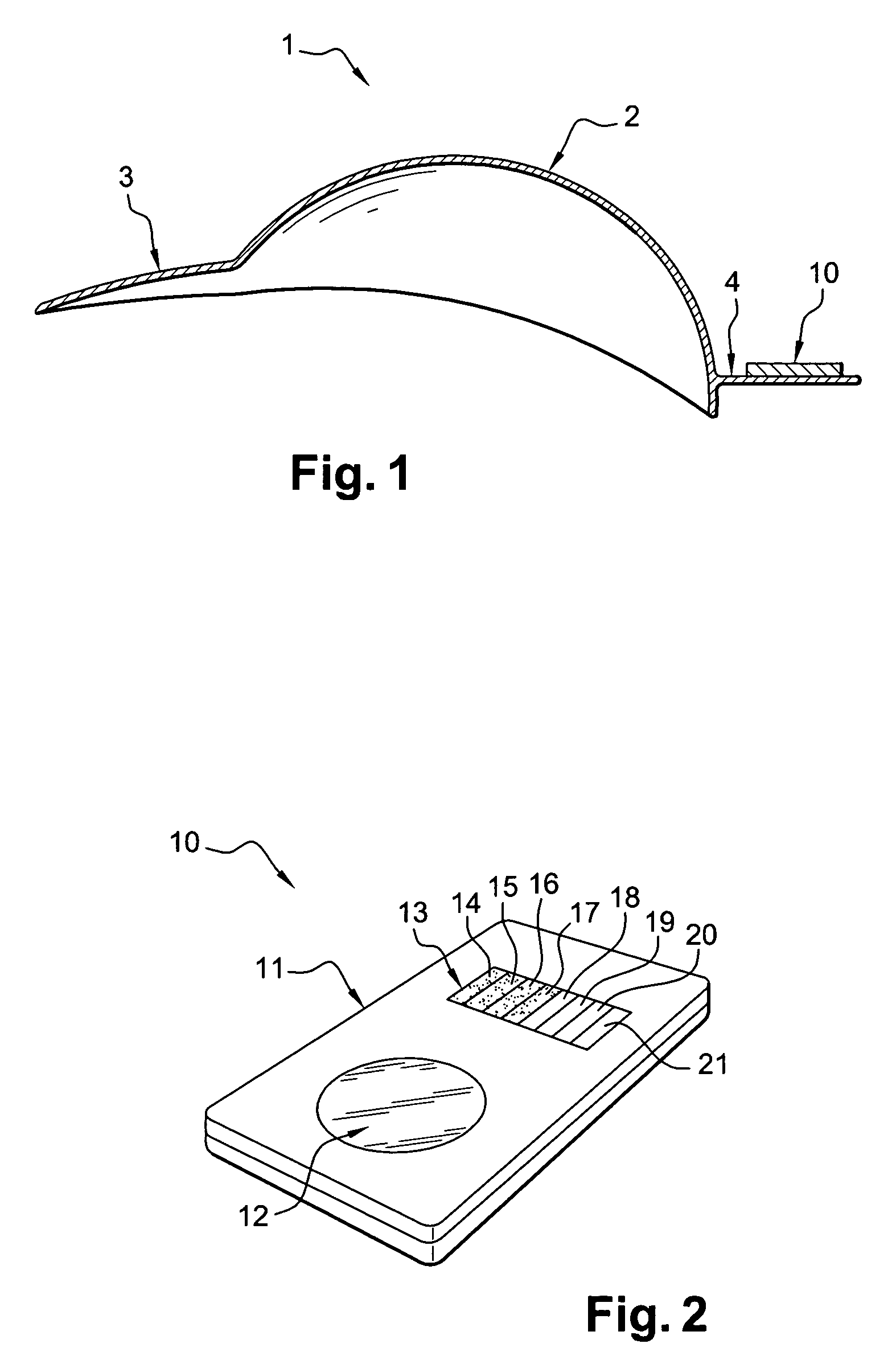Device to prevent the risk of overexposure to harmful solar radiation
a technology of solar radiation and device, applied in the field of solar radiation detection device, can solve the problems of limited effectiveness, difficult estimation of application frequency, and significant increase in the risk of skin cancer in human body exposure to solar radiation, and achieve the effect of reducing the risks associated with exposur
- Summary
- Abstract
- Description
- Claims
- Application Information
AI Technical Summary
Benefits of technology
Problems solved by technology
Method used
Image
Examples
Embodiment Construction
[0040]FIG. 1 illustrates an example of a device according to the invention. The device includes a cap 1 having a portion made, e.g., of woven fabric 2 intended to fit snugly over the skull of a subject, in particular a child. The cap 1 includes a visor 3 (made, e.g., of thick cardboard or plastic covered in fabric) intended to be positioned conventionally over the subject's face.
[0041]Opposite the visor 3, the cap 1 includes another visor 4 on the upper surface of which is arranged a detection / display unit 10 which will be described in detail with reference to FIG. 2. The shape of the detection / display device 10 can be, for example, similar to that of a credit card.
[0042]The device 10 can be attached to the visor 4 in an irreversible manner, or more preferably, in a reversible manner. In the latter case, the device 10 can be attached, for example, with VELCRO® type (hook and loop) fasteners. Thus, the device 10 can be removed before cleaning the cap.
[0043]The visor 4 can be made of ...
PUM
 Login to View More
Login to View More Abstract
Description
Claims
Application Information
 Login to View More
Login to View More - R&D
- Intellectual Property
- Life Sciences
- Materials
- Tech Scout
- Unparalleled Data Quality
- Higher Quality Content
- 60% Fewer Hallucinations
Browse by: Latest US Patents, China's latest patents, Technical Efficacy Thesaurus, Application Domain, Technology Topic, Popular Technical Reports.
© 2025 PatSnap. All rights reserved.Legal|Privacy policy|Modern Slavery Act Transparency Statement|Sitemap|About US| Contact US: help@patsnap.com



